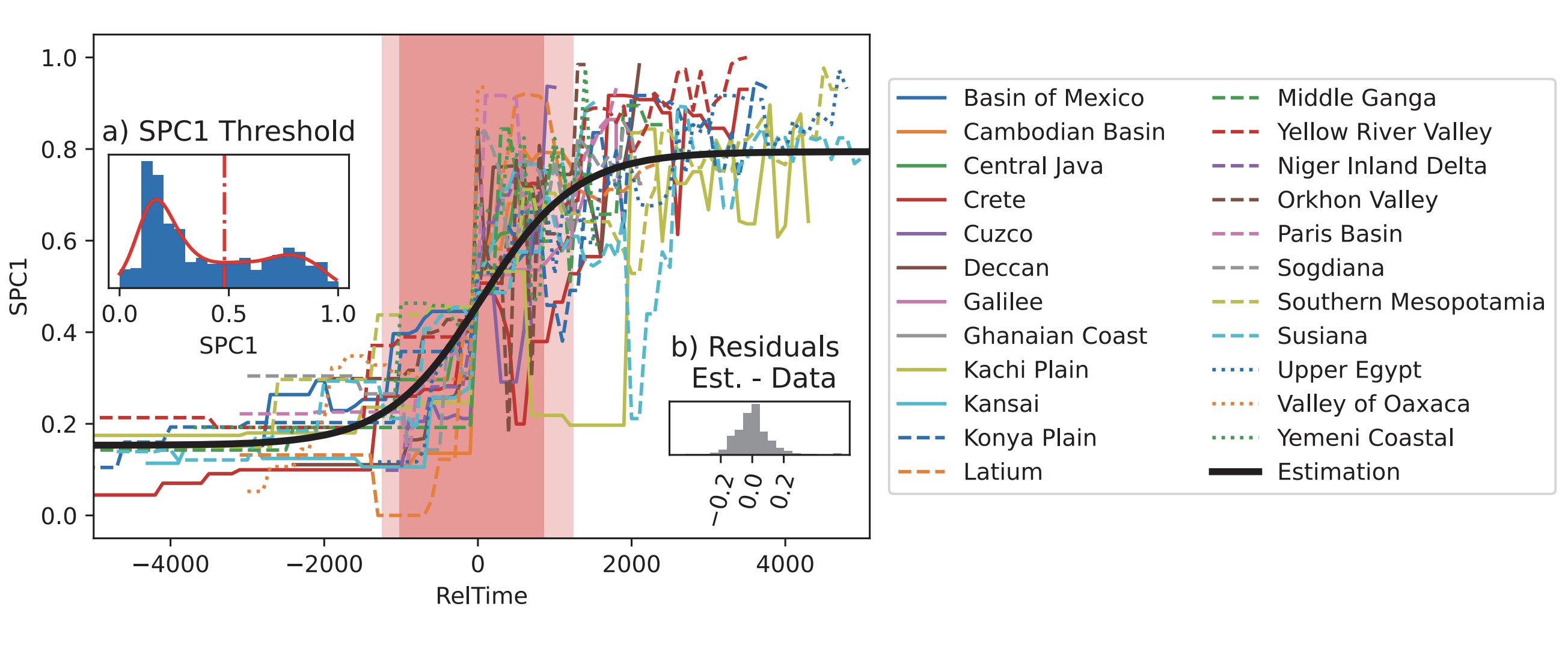
Are cultural evolution rates similar across human societies? The emerging field of Cliodynamics uses mathematical models to study history.
Tobias Wand and colleagues used a data-driven approach to estimate the rates of cultural evolution in 23 geographic areas, using data from Seshat: Global History Databank, which records nine “complexity characteristics” for 370 polities over 10,000 years, ending in the nineteenth century. The work is published in the journal PNAS Nexus.
The complexity characteristics are polity population; extent of polity territory; the size of the largest urban center; hierarchical complexity; the presence of professional soldiers, officers, priests, bureaucrats, and judges; the variety of observable structures; characteristics of writing and recordkeeping; variety of types of texts; and monetary system.
The authors focused on 23 Natural Geographic Areas (NGAs) and restricted their analysis to the central part of each NGA’s timeline so that they could focus on periods of steady, uninterrupted growth rather than moments of invasion or civilization-ending crisis. A universal logistic growth model was fitted to a variable combining all nine complexity characteristics.
On average, it takes societies that develop in isolation about 2,500 years to reach high levels of social complexity, according to the authors. Full development of complexity was spread out over multiple cultural or institutional phases in every NGA.
According to the authors, the data suggest that there are common pathways in human social evolution across cultures.
More information:
Tobias Wand et al, The characteristic time scale of cultural evolution, PNAS Nexus (2024). DOI: 10.1093/pnasnexus/pgae009
Citation:
Is there a typical rate of cultural evolution? (2024, February 7)
retrieved 7 February 2024
from https://phys.org/news/2024-02-typical-cultural-evolution.html
This document is subject to copyright. Apart from any fair dealing for the purpose of private study or research, no
part may be reproduced without the written permission. The content is provided for information purposes only.







